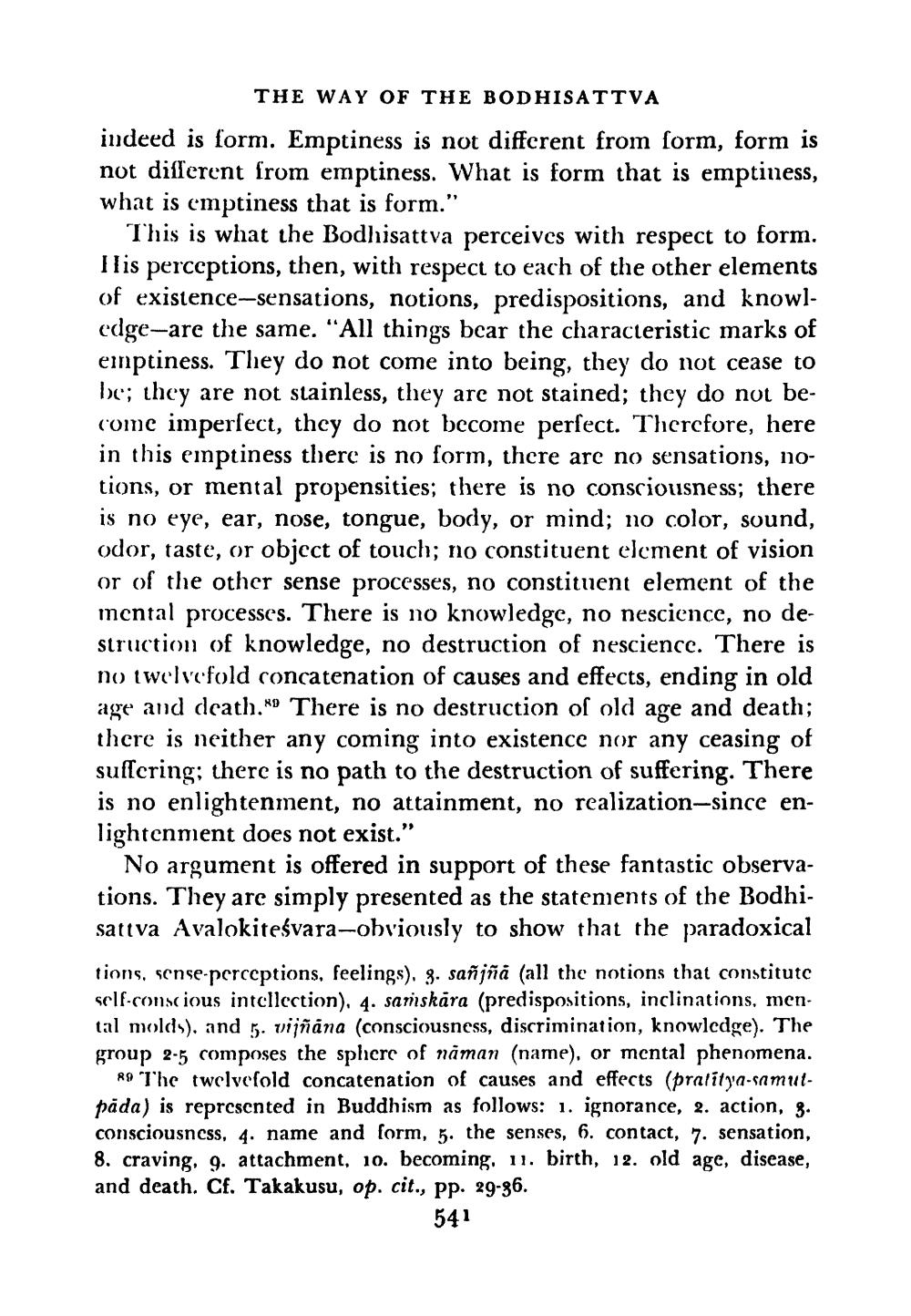________________
THE WAY OF THE BODHISATTVA indeed is form. Emptiness is not different from form, form is not different from emptiness. What is form that is emptiness, what is emptiness that is form."
This is what the Bodhisattva perceives with respect to form. Ilis perceptions, then, with respect to each of the other elements of existence--sensations, notions, predispositions, and knowledge-are the same. "All things bear the characteristic marks of emptiness. They do not come into being, they do not cease to be; they are not stainless, they are not stained; they do not become imperfect, thcy do not become perfect. Therefore, here in this einptiness there is no form, there are no sensations, notions, or mental propensities; there is no consciousness; there is no eye, ear, nose, tongue, body, or mind; no color, sound, odor, taste, or object of touch; no constituent element of vision or of the other sense processes, no constituent element of the mental processes. There is no knowledge, no nescience, no destruction of knowledge, no destruction of nescience. There is no twelvefold concatenation of causes and effects, ending in old age and death. There is no destruction of old age and death; there is neither any coming into existence nor any ceasing of suffering; there is no path to the destruction of suffering. There is no enlightenment, no attainment, no realization since enlightenment does not exist.
No argument is offered in support of these fantastic observations. They are simply presented as the statements of the Bodhisativa Avalokitesvara-obviously to show that the paradoxical
tions, sense perceptions, feelings), 8. sañiña (all the notions that constitute self-conscious intcllection), 4. samskära (predispositions, inclinations, mental molds), and 5. vijñāna (consciousness, discrimination, knowlcdge). The group 2-5 composes the splicre of naman (name), or mental phenomena.
R9 The twelvefold concatenation of causes and effects (pralitya-samutpäda) is represented in Buddhism as follows: 1. ignorance, 2. action, g. consciousness, 4. name and form, 5. the senses, 6. contact, 7. sensation, 8. craving, 9. attachment, 10. becoming. u. birth, 12. old age, disease, and death. Cf. Takakusu, op. cit., pp. 29-36.
541




